Carnival Games Challenge Part 1
Design an interactive game!
SESSION ROLES:
🐙 = Site Coordinator
🦉= Mentor
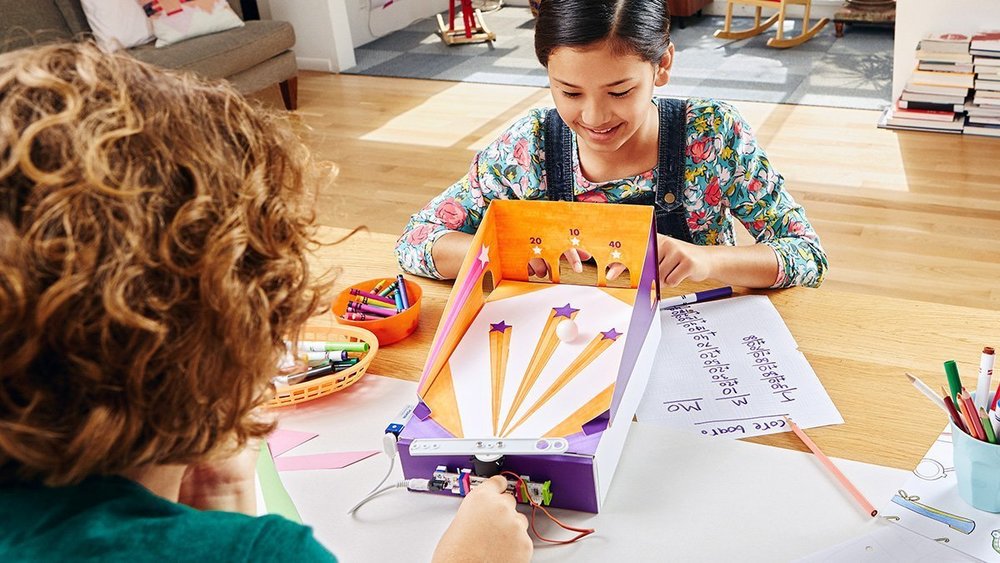
Notes for Site Coordinators and Mentors:
-
This is part 1 of the Carnival Games Challenge.
-
This challenge is structured in three parts. The first two sessions focus on creating and remixing unique carnival games with littleBits. In the third session, you will host a Carnival Showcase where students, mentors, and parents will take turns playing each other’s games.
-
Please invite parents and caregivers to come partake in the final Carnival Showcase session!
-
This session guide provides a detailed outline for part 1 of the Carnival Games Challenge, but feel free to improvise or put your own spin to things. If you have an idea for a challenge or prompt that will get students excited, go for it! If something is not working well, change course and experiment another path forward. If you do change things up, we would love to hear what has been successful for you!
Session Overview
The Carnival Games Challenge is structured in three parts. This session is Part 1 of the Carnival Games Challenge.
The best carnival games often use electronics to make things louder, brighter, and more exciting. In this challenge, students will use Bits and other materials to remake their favorite carnival game, or imagine a brand new game.
-
First they will brainstorm ideas for their game and explore how Bits can be used with different materials.
-
Then they will build and test multiple prototypes of their favorite idea.
-
At the close of the challenge, they will invite others to play their games and explain the rules and experience what it takes to win.
Session Details
Difficulty:
Intermediate
Duration:
2 hours
Subjects:
Engineering
Art/Design
Prerequisite Knowledge:
Supplies
Bits + Accessories:
STEM Inventor Kit
Device:
Mentors will need to bring a connected device (phone, tablet, or computer) to access instructional videos
Recycled Materials:
Ex: cardboard, cereal boxes, plastic bottles, paper towel tubes, etc. You can work with students and mentors to collectively bring these supplies in as needed.
Tools:
Scissors
Other Materials:
Extra 9V batteries
Tape
Colored Paper
Markers
Pen/Pencil & Paper
Description
Theme: Interaction Design
Objectives: By the end of the Carnival Games Challenge, students will be able to:
-
Use actual carnival games as inspiration for the games that they’d like to reinvent.
-
Create a functioning circuit(s) that brings their game to life (can be motion, lights, sound or a combination of).
-
Design a carnival game, that is real or imagined.
-
Give and receive constructive verbal feedback while testing their inventions.
-
Write an instruction set for creating their game and how players can win.
-
Share their game with others and explain the rules of the game.
Resources
Inspirational Links:
My Future Self Worksheet:
Print out the My Future Self Worksheet to pass out to each of your participants.
Helpful Links:
Set Up
🐙SITE COORDINATORS:
-
Make sure all the supplies for this session are prepped and ready to go. Discuss with mentors if you need help gathering recycled materials.
-
Place a variety of construction materials and tools in a central location in the room.
-
-
Note that students will need to be able to store their in-progress inventions in between sessions 8 & 9 & 10.
-
This challenge can be done individually or in small groups. Decide beforehand what makes the most sense for your site. If you are participating in groups, be sure that they keep track of the Bits and accessories they use so everyone has a full set at the end of the challenge.
-
For this challenge, we suggest handing out the kits during the CREATE phase (after the ideation activities) to keep focused on initial instructions.
🦉MENTORS:
Make sure to bring a charged connected device (phone, iPad, or computer) to access instructional videos during the session.
Meet Up
5 MIN
🐙SITE COORDINATORS:
-
Take attendance and make sure mentors are paired off.
🦉MENTORS:
-
Take turns asking each other questions. Example prompts:
-
What's one thing you created or invented this week?
-
Introduce
10 MIN
🐙SITE COORDINATORS INTRODUCE THE SESSION
Introduce the session objectives and the concept behind the challenge:
“Today you will use littleBits to recreate or design your own carnival game!”
Ask: What are some of your favorite carnival games that incorporate electronics? Students can draw, write, or talk with a partner to respond to the question.
Ask: Who would like to share and describe one game that you drew/wrote about/talked about? Let a few learners share ideas.
Before jumping into the challenge, provide a quick review of the Invention Cycle framework. Ask students to share lessons learned about Bits, the invention process and things they enjoyed or struggled with from previous challenges.
Goals for Carnival Games Challenge Part 1:
-
Brainstorm ideas for different carnival games
-
Choose a direction to work towards
-
Explore interactions with different Bits
-
Create a sketch of the invention idea
-
Start creating a prototype
Inspire
10 MIN
🦉MENTORS REVIEW SESSION INSPIRATION VIDEOS AND PROMPTS
Career Exploration
As a warm up activity, mentors will explore two women in STEM who have made significant contributions to their field. Please take a few minutes to review the bios provided in the postcards below and brainstorm with your mentee what contributions they would make as a leader in this field fifteen years from now. Ask your mentee(s) the following:
- Can you see yourself in her job?
- Are you interested to learn more about her job?
- What inspires you about this role model?
(Expand on some phrases or words that may be difficult to understand.)
*The purpose of the postcards are meant to provide students with the career endeavors and examples of STEM positions of successful women in STEM to inspire them and explore different types of careers in STEM.*
Download Women in STEM postcards here:
TERRY WINSTON EDITH CLARKE
Students will now have a chance to describe and draw themselves in their future STEM career.
🐙SITE COORDINATORS:
Print out the My Future Self Worksheet before class to pass out to each of your participants:
We encourage you to present these worksheets alongside student creations for the Showcase Carnival!
Inspire in Action:
WORKSHEET ACTIVITY
10 MIN
Invention Ideas
5 MIN
THESE VIDEOS SHOW EXAMPLES OF INTERACTIVE GAMES INVENTED WITH LITTLEBITS AND OTHER MATERIALS. TAKE A LOOK!
Invent a game that puts a new spin on an old arcade favorite: the Pinball Machine. Use the slide dimmer to bounce the ball all over this invention. But watch out, the ball will bounce and bump all over the box like it's out of control!
This project is created with littleBits by BONEVET makers to show the glorious moment when Majlinda Kelmendi won the gold medal at the Rio Olympics Women's Judo Final. The game can be played by two players.
Marble Mission: an arcade game made with littleBits!
Arcade game made with littleBits: you can make targets with prizes behind them that are released when hit by a coin
littleBits Wrestling Game
Tech Table Tennis
Create
80 MIN
🦉MENTORS:
Facilitate the CREATE activities with mentees.
🐙SITE COORDINATORS:
During the CREATE activities, float around the room and observe/help out where needed. You will also monitor the time and announce when the group should come together near the end.
Carnival Games Challenge
Design an interactive game!
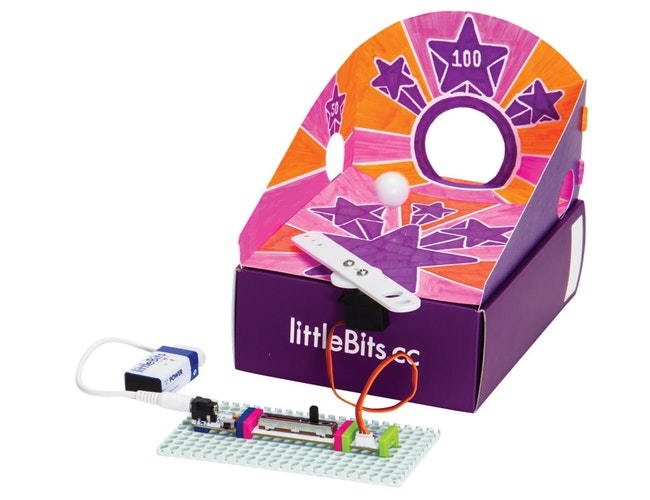

Brainstorm:
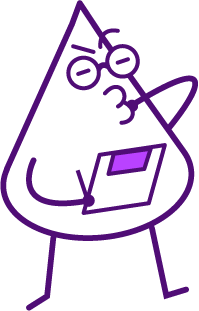
-
Prompt students to create a list (either as an entire, or in small teams) of carnival games they would like to create. If students are feeling creative, they can dream up their own game.
-
Have them sketch out or write down three ideas.
Choose an Idea:
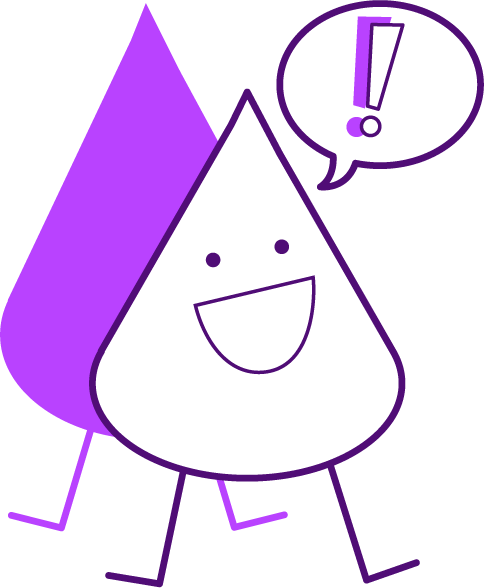
Have students choose one idea to bring to life.
-
As a group or in small teams discuss: What are the constraints?
-
Constraints are the limits and requirements that need to be considered in the invention process. Examples include time, materials, weight. Have students detail any constraints that they may need to keep in mind as they work.
-
-
What are the criteria for success?
-
How will you know if their invention works? Describe the number-one goal for the invention. What qualities are important for the invention to have?
-
How will players know when they win or lose the game? What are the rules players should follow?
-
-
For students who are designing a new game, have them consider the following elements:
-
COMPONENTS: Whether it’s the players that make the game, little wooden pawns, or extraterrestrial obstacles, your game needs items.
-
PLAYERS: Is it an individual or multi-player game?
-
SPACE: Well, it all needs to happens somewhere, right?
-
MECHANICS: The actions that you take in the game. Think of verbs like jumping, pushing, swinging!
-
GOALS: Make your game have multiple goals that allow your players to make interesting choices.
-
STRATEGY: Even if you are making a very simple game, make sure that it allows for some strategy so that, if played again, the game will not give the same outcomes. Bottom line: If the same person is winning over and over, something is wrong.
-
SURPRISES: You might not be the surprise type, but a game is no fun without some unexpected moments.
-
Explore your Bits and Materials
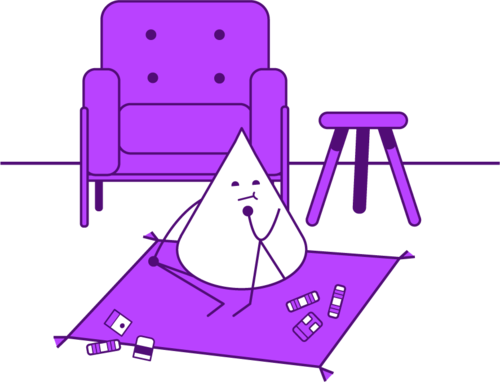
-
Instruct students to look through their available Bits and materials to see how they could (or couldn’t) help solve their problem.
-
For example, how could a servo trigger a proximity sensor? How could a buzzer give feedback about the game? How could other materials (e.g. books, cardboard, cups) serve as triggers or targets? If students get stuck, try snapping a Bit into a circuit or read through the DCI STEM STEM Kit Bit Index
Sketch Out Your Idea
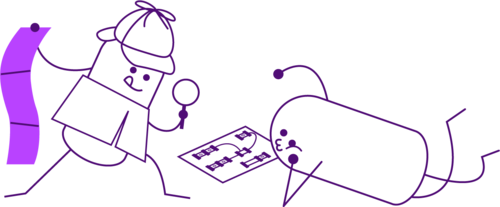
-
Students create a drawing(s) of their first prototype, labeling Bits and any important features. A description of how the prototype is supposed to work can be included.
-
Describe the #1 goal for the invention
-
What do you want your invention to look like?
*SAVE THIS SKETCH FOR REFERENCE IN THE NEXT SESSION
Create your First Prototype (time permitting)

-
A prototype is a simple model that lets you test out your idea!
-
This is a time to dig into the Bits and materials and start to bring their ideas to life. Think big!
-
Use your sketch as inspiration for your first prototype.
-
Don’t worry about getting everything right on the first try! The important thing is to just get started and experiment. Building a physical model of your idea makes it easier to share with others and collect feedback on your design. This is a time to dig into the Bits and materials and start to bring your ideas to life.
Make a plan for next session
-
In the next session, let students know that they will test, and improve their carnival game. They will also make a poster of how it works and the rules for winning.
-
Discuss with your mentee if there are any other special materials they want to use for their invention.
-
Make a plan to bring these materials for next session if you don’t have them in this session. Perhaps you can divide and conquer - you can bring a few things and so can your mentee.
Reflect
5 MIN
🦉MENTORS:
Reflect with your mentee: “What is one new thing that you learned during this challenge?”
Close
10 MIN
Wrap Up
🦉MENTORS:
-
Discuss with your mentee if there are any special materials they want to use for their final invention. Make a plan to bring these materials for next session. Perhaps you can divide and conquer - you can bring a few things and so can your mentee.
-
Make sure to power off the Power Bit and disconnect the battery.
-
Place all Bits & Accessories that you are not using back in the box.
-
Store the sketch in the kit box as well so you can reference it next time.
🐙SITE COORDINATORS:
-
Find a safe place to store prototypes until the next session.
-
Store kits away for next time.
-
Announce plan for next session:
-
Finish first prototype (if you haven’t already done so)
-
Test your prototype and get feedback from others
-
Iterate and update your prototype
-
Create a poster or flyer that explains the rules for your game and what it takes to win
-


